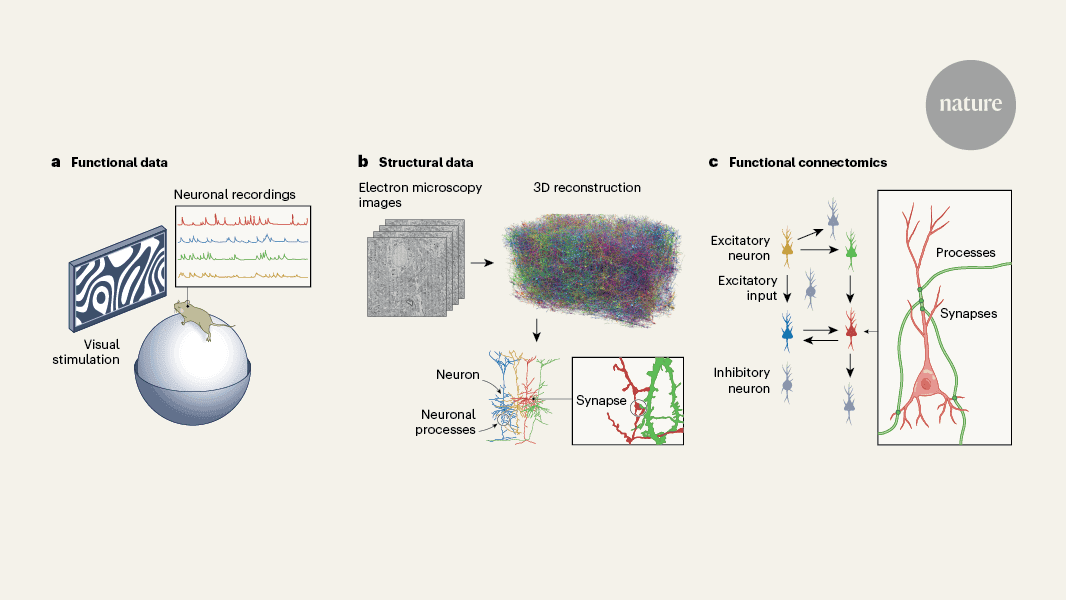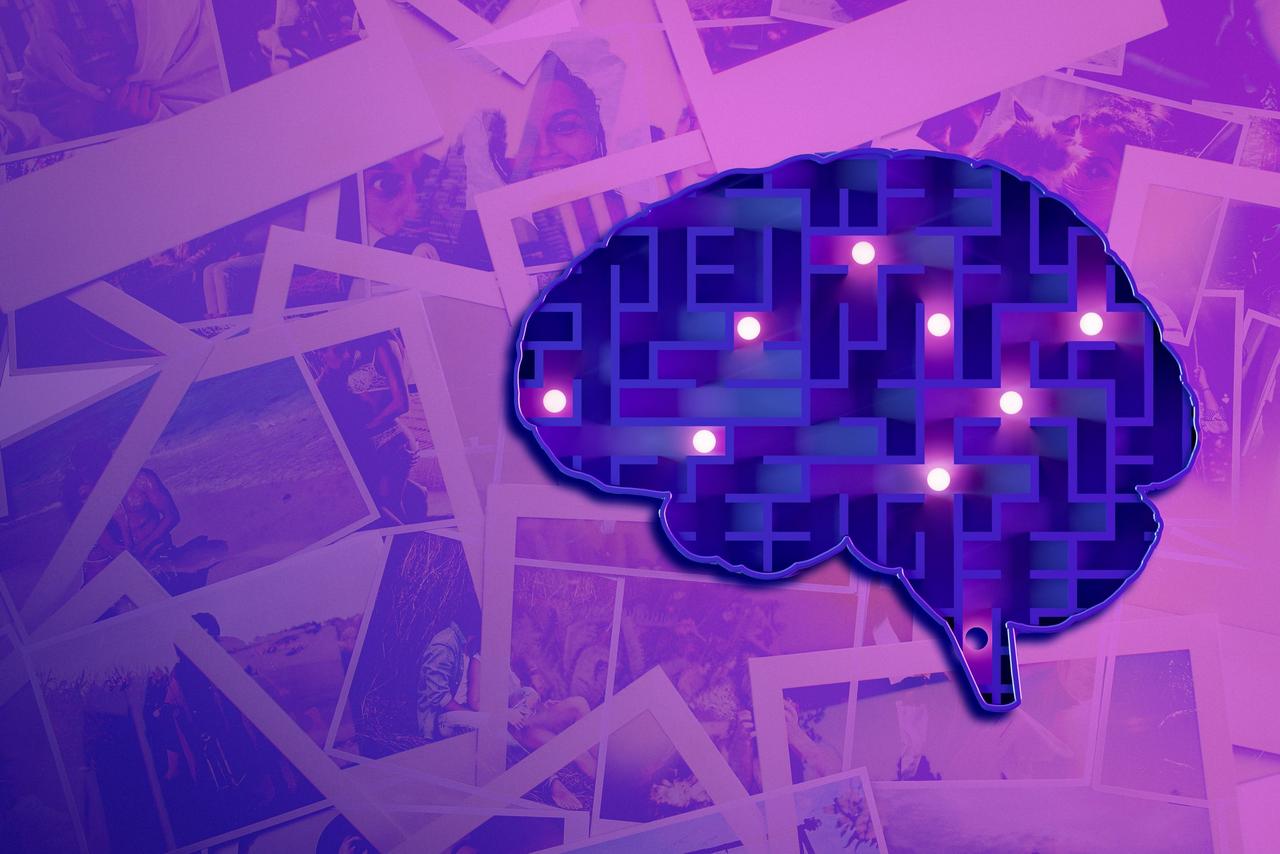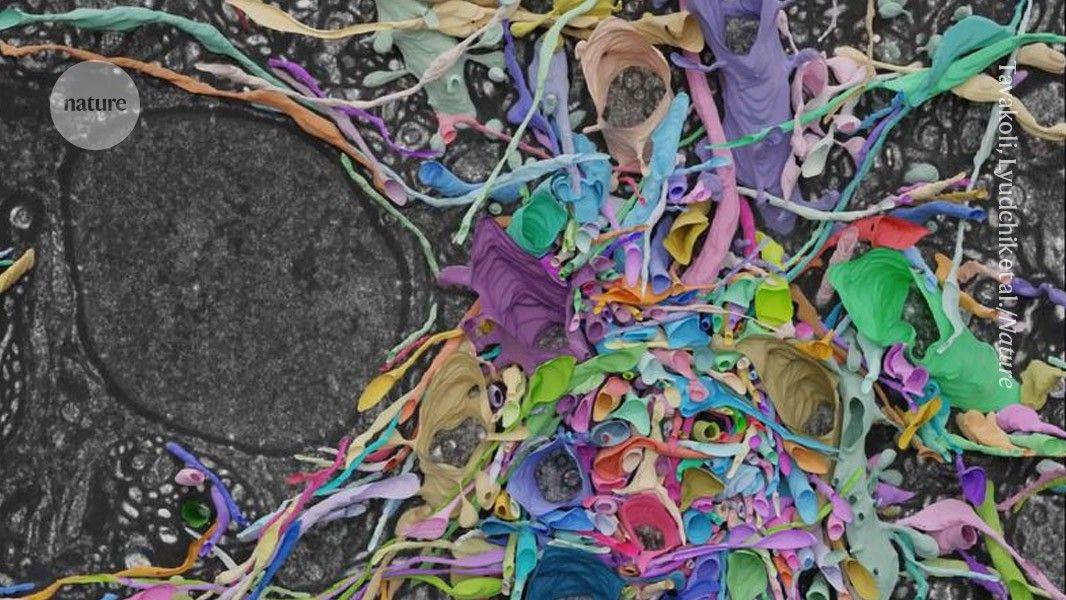AI-Assisted Study Reveals Structural Basis of Memory Formation in Mouse Brain
2 Sources
2 Sources
[1]
Study reveals the structural underpinnings of memory formation in the mouse brain
National Institutes of HealthMar 20 2025 In a study supported by the National Institutes of Health (NIH), researchers revealed the structural underpinnings of memory formation across a broad network of neurons in the mouse brain. This work sheds light on the fundamentally flexible nature of how memories are made, detailing learning-related changes at the cellular and subcellular levels with unprecedented resolution. Understanding this flexibility may help explain why memory and learning processes sometimes go awry. The findings, published in Science, showed that neurons assigned to a memory trace reorganized their connections to other neurons through an atypical type of connection called a multi-synaptic bouton. In a multi-synaptic bouton, the axon of the neuron relaying the signal with information contacts multiple neurons that receive the signal. According to the researchers, multi-synaptic boutons may enable the cellular flexibility of information coding observed in previous research. The researchers also found that neurons involved in memory formation were not preferentially connected with each other. This finding challenges the idea that "neurons that fire together wire together," as would be predicted by a traditional theory of learning. In addition, the researchers observed that neurons allocated to a memory trace reorganized certain intracellular structures that provide energy and support communication and plasticity in neuronal connections. These neurons also had enhanced interactions with support cells known as astrocytes. Using a combination of advanced genetic tools, 3D electron microscopy, and artificial intelligence, Scripps Research scientists Marco Uytiepo, Anton Maximov, Ph.D., and colleagues reconstructed a wiring diagram of neurons involved in learning and identified structural changes to these neurons and their connections at the cellular and subcellular levels. This image shows an AI-assisted nanoscale 3D reconstruction of neuronal synapses in the mouse hippocampus. To examine structural features associated with learning, the researchers exposed mice to a conditioning task and examined the hippocampus region of the brain about 1 week later. They selected this time point because it occurs after memories are first encoded but before they are reorganized for long-term storage. Using advanced genetic techniques, the researchers permanently labeled subsets of hippocampal neurons activated during learning, which enabled reliable identification. They then used 3D electron microscopy and artificial intelligence algorithms to produce nanoscale reconstructions of the excitatory neural networks involved in learning. This study provides a comprehensive view of the structural hallmarks of memory formation in one brain region. It also raises new questions for further exploration. Future studies will be crucial in determining whether similar mechanisms operate across different time points and neural circuits. In addition, further investigation into the molecular composition of multi-synaptic boutons is needed to determine their precise role in memory and other cognitive processes. The research was supported by funding from the National Institute of Mental Health, the National Institute of Neurological Disorders and Stroke, and NIH's Brain Research Through Advancing Innovative Neurotechnologies® Initiative, or The BRAIN Initiative®. National Institutes of Health Journal reference: Uytiepo, M., et al. (2025). Synaptic architecture of a memory engram in the mouse hippocampus. Science. doi.org/10.1126/science.ado8316.
[2]
Study illuminates the structural features of memory formation at cellular and subcellular levels
Researchers have revealed the structural underpinnings of memory formation across a broad network of neurons in the mouse brain. This work sheds light on the fundamentally flexible nature of how memories are made, detailing learning-related changes at the cellular and subcellular levels with unprecedented resolution. Understanding this flexibility may help explain why memory and learning processes sometimes go awry. The findings, published in Science, showed that neurons assigned to a memory trace reorganized their connections to other neurons through an atypical type of connection called a multi-synaptic bouton. In a multi-synaptic bouton, the axon of the neuron relaying the signal with information contacts multiple neurons that receive the signal. According to the researchers, multi-synaptic boutons may enable the cellular flexibility of information coding observed in previous research. The researchers also found that neurons involved in memory formation were not preferentially connected with each other. This finding challenges the idea that "neurons that fire together wire together," as would be predicted by a traditional theory of learning. In addition, the researchers observed that neurons allocated to a memory trace reorganized certain intracellular structures that provide energy and support communication and plasticity in neuronal connections. These neurons also had enhanced interactions with support cells known as astrocytes. Using a combination of advanced genetic tools, 3D electron microscopy, and artificial intelligence, Scripps Research scientists Marco Uytiepo, Anton Maximov, Ph.D., and colleagues reconstructed a wiring diagram of neurons involved in learning and identified structural changes to these neurons and their connections at the cellular and subcellular levels. To examine structural features associated with learning, the researchers exposed mice to a conditioning task and examined the hippocampus region of the brain about a week later. They selected this time point because it occurs after memories are first encoded but before they are reorganized for long-term storage. Using advanced genetic techniques, the researchers permanently labeled subsets of hippocampal neurons activated during learning, which enabled reliable identification. They then used 3D electron microscopy and artificial intelligence algorithms to produce nanoscale reconstructions of the excitatory neural networks involved in learning. This study provides a comprehensive view of the structural hallmarks of memory formation in one brain region. It also raises new questions for further exploration. Future studies will be crucial in determining whether similar mechanisms operate across different time points and neural circuits. In addition, further investigation into the molecular composition of multi-synaptic boutons is needed to determine their precise role in memory and other cognitive processes.
Share
Share
Copy Link
Researchers use advanced AI and imaging techniques to uncover the cellular and subcellular changes associated with memory formation in mice, challenging traditional theories of neural connectivity.

Groundbreaking Study Unveils Memory Formation Mechanisms
A groundbreaking study supported by the National Institutes of Health (NIH) has shed new light on the structural underpinnings of memory formation in the mouse brain. The research, published in Science, utilized a combination of advanced genetic tools, 3D electron microscopy, and artificial intelligence to reveal unprecedented details about the cellular and subcellular changes associated with learning and memory
1
2
.Challenging Traditional Theories
The study's findings challenge some long-held beliefs about neural connectivity. Contrary to the popular notion that "neurons that fire together wire together," the researchers discovered that neurons involved in memory formation were not preferentially connected with each other. This revelation opens up new avenues for understanding the complex nature of memory formation and storage
1
2
.Multi-Synaptic Boutons: A Key to Flexible Memory Formation
One of the most significant findings of the study was the role of multi-synaptic boutons in memory formation. These atypical neural connections, where a single axon contacts multiple receiving neurons, appear to be crucial in reorganizing neural networks during learning. The researchers suggest that these structures may enable the cellular flexibility of information coding observed in previous studies
1
2
.Intracellular Reorganization and Astrocyte Interactions
The study also revealed that neurons involved in memory formation undergo significant intracellular reorganization. Certain structures that provide energy and support communication and plasticity in neuronal connections were found to be restructured. Additionally, these neurons showed enhanced interactions with astrocytes, supporting cells that play a crucial role in brain function
1
2
.Advanced Techniques and AI in Neuroscience
The research team, led by scientists Marco Uytiepo and Anton Maximov, Ph.D., from Scripps Research, employed cutting-edge techniques to conduct their study. They used advanced genetic tools to permanently label neurons activated during learning, allowing for reliable identification. The team then utilized 3D electron microscopy and AI algorithms to create nanoscale reconstructions of the excitatory neural networks involved in learning
1
2
.Related Stories
Timing and Location of the Study
The researchers focused their investigation on the hippocampus, a brain region crucial for memory formation. They examined this area about a week after exposing mice to a conditioning task, a timepoint chosen because it occurs after initial memory encoding but before long-term storage reorganization
1
2
.Future Directions and Implications
While this study provides a comprehensive view of memory formation's structural hallmarks in one brain region, it also raises new questions for further exploration. Future research will need to determine if similar mechanisms operate across different time points and neural circuits. Additionally, further investigation into the molecular composition of multi-synaptic boutons is needed to understand their precise role in memory and other cognitive processes
1
2
.This research, supported by various NIH institutes including the National Institute of Mental Health and the BRAIN Initiative®, represents a significant step forward in our understanding of memory formation. The insights gained from this study could have far-reaching implications for our understanding of learning processes and potentially for the treatment of memory-related disorders.
References
Summarized by
Navi
Related Stories
Recent Highlights
1
AI Chatbots Sway Voters More Effectively Than Traditional Political Ads, New Studies Reveal
Science and Research

2
OpenAI declares code red as Google's Gemini 3 gains 200 million users in three months
Technology

3
Trump approves Nvidia H200 chip exports to China with 25% revenue cut, defying Senate concerns
Policy and Regulation








